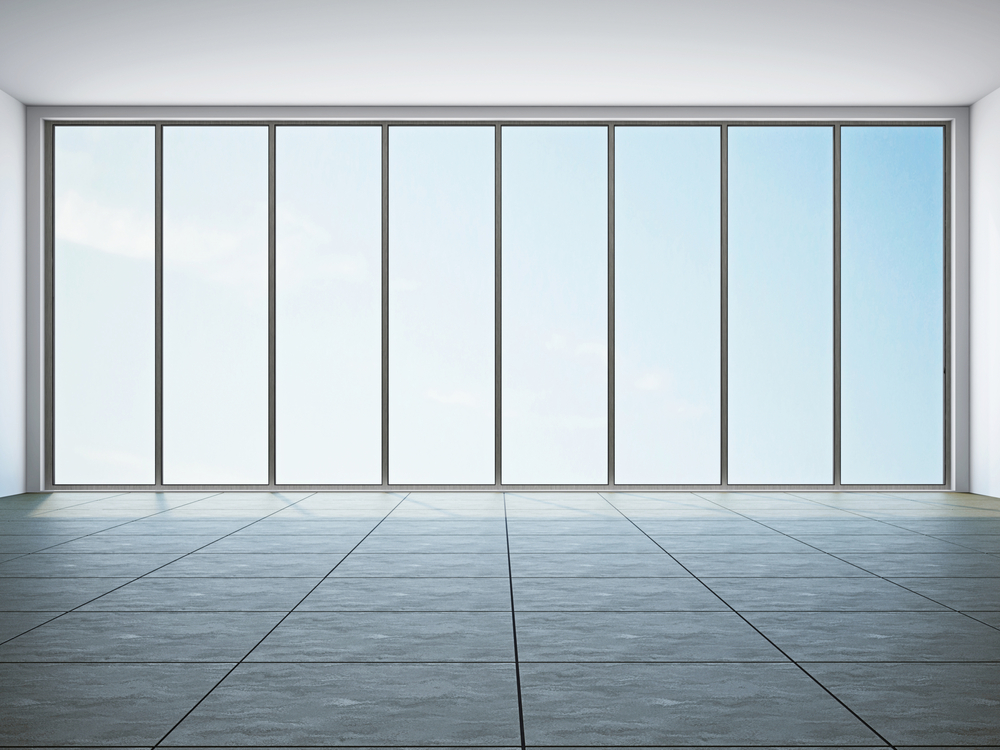How much do Floor to Ceiling Windows Cost
Floor to ceiling windows are a great way to open up your interior space, creating a huge influx of light and air - the average floor to ceiling window costs £1,050 per square metre, using structural glazing.
There are multiple variables, including the size of your windows, the materials you choose, preparatory work and whether you'd like a bifold sliding door or a structural glass window looking out onto your exterior.
Factors That Impact Average Floor to Ceiling Windows Cost
Glass walls can be as complex or straightforward as you wish, although a bifold mechanism will inevitably cost more than static, reinforced glazing.
As a rough guide, floor to ceiling window costs come in at the below averages. Prices depend on the material of your frame and the width of the glass:
- Structural glass walls - £1,050 per metre square.
- Aluminium bifold floor to ceiling windows - £3,825.
- Timber bifold windows with three to five panels - £3,400.
- UPVC floor to ceiling windows with a bifold opening - £2,975.
Timber and aluminium tend to be more expensive frame options. However, you may prefer to invest in a premium floor to ceiling window unit to reflect the style and period of your property.
UPVC is a lower-cost alternative and lasts for many years, often with a warranty of up to 20 years which can be a great selling point.
High energy-efficiency ratings and thermal insulation are as-standard on modern UPVC windows, normally double or triple-glazed.
Get quotes for new windows
See how we work below.
Additional Considerations in Fitting Floor to Ceiling Windows
While the size and shape of your windows will be the primary cost driver, it's also important to understand which other elements of your project will have the most bearing on the overall cost.
Preparatory work can comprise a few stages and is more involved if you install floor-to-ceiling windows in a room with existing conventional frames or replace a brick wall with laminated glass.
In this case, your window fitter will need to account for:
- Labour hours to knock through the brickwork, make good on the edging and securing any wires or piping running through the wall.
- Skip hire and waste removal to dispose of the old glass and frame responsibly.
- Electrical or plumbing work if any wires or pipes need to be rerouted away from the floor to ceiling installation point.
- Scaffolding if your wall is above floor level or difficult to access.
- Decorating work, often with plastering required to create an even finish around the new window frame.
The quality of your materials can make a substantial difference to your window cost.
For example, if you would like timber frames, a mahogany or oak frame, while long-lasting and with a beautiful depth of colour, will cost considerably more than a cheaper softwood.
Most homeowners opt for UPVC for affordability, efficiency and durability, but your choice of framing material is individual to you and the aesthetic you'd like to achieve.
Benefits of Choosing Floor to Ceiling Windows for Your Home
Large-scale glass windows can look striking and have several advantages along with transforming the feel of your property:
- Merging functionality of walls and windows, maximising natural light.
- Emphasising focal points and scenery, often enhancing the value of your home.
- Making smaller, darker properties feel more open and spacious.
The downside is that there isn't a great deal of privacy if your floor to ceiling windows open onto a public path or road, but you can always opt for treated glass or decorative drapes as required.
This video gives you a sense of how floor to ceiling windows might look in your home:
Frequently Asked Questions - Floor to Ceiling Windows Cost
Below we'll answer some of the commonly asked questions about installing floor to ceiling windows in your home and how to manage your budget.
How Tall Can My Floor to Ceiling Windows Be?
It's entirely up to you! Most windows are around three feet from the floor, and up to 18 inches from the ceiling as standard, leaving a header (behind which you'll have your supporting lintel).
However, a full-size floor to ceiling window can encompass the entirety of your external wall, so it's best to have a contractor carry out a site visit and advise on the viability of the design you have in mind.
You can fit a set of floor to ceiling windows with toughened glass, making it very difficult to break. This feature is part of the building regulations requirements for any glazing within a certain distance of flooring.
Do I Need Tempered Glass in a Floor to Ceiling Window?
Yes, because the glass is at ground level, it's far more exposed to accidental knocks and impacts than a traditional window higher up in the wall.
Glazing is tempered (aka laminated or reinforced), eliminating the potential security hazard and making a floor to ceiling window much safer, particularly in homes with smaller children or pets.
How Can I Make a Floor to Ceiling Window Energy-Efficient?
Heating costs and energy-efficiency certificates are important for many homeowners, especially where utility costs are soaring.
A professionally installed window with triple-glazing provides the optimal insulation. There are various eco-friendly coatings and finishes a window fitter can apply, which redirect sunlight and UV rays or shield your home from energy wastage.
Double-glazing is the norm, and triple-glazing usually carries a slight price uplift. However, it may pay for itself to reduce heating expenses and keep your home warm, light and well-ventilated.
Will My Insurance Cover Damage to a Floor to Ceiling Window?
If you're investing in a stunning full-length window, it's best to contact your building insurer to clarify whether this is likely to impact your insurance premiums.
Most policies cover accidental damage, and you might even find that your insurance cover reduces if you're using quality materials and security locks if you go for a bifold floor to ceiling window that opens along a sliding track.
The best way to safeguard the cost of paying for expensive repairs or even glazing replacements is to look for a quotation with a decent warranty and guarantee against the work carried out.
Get quotes for new windows
See how we work below.


